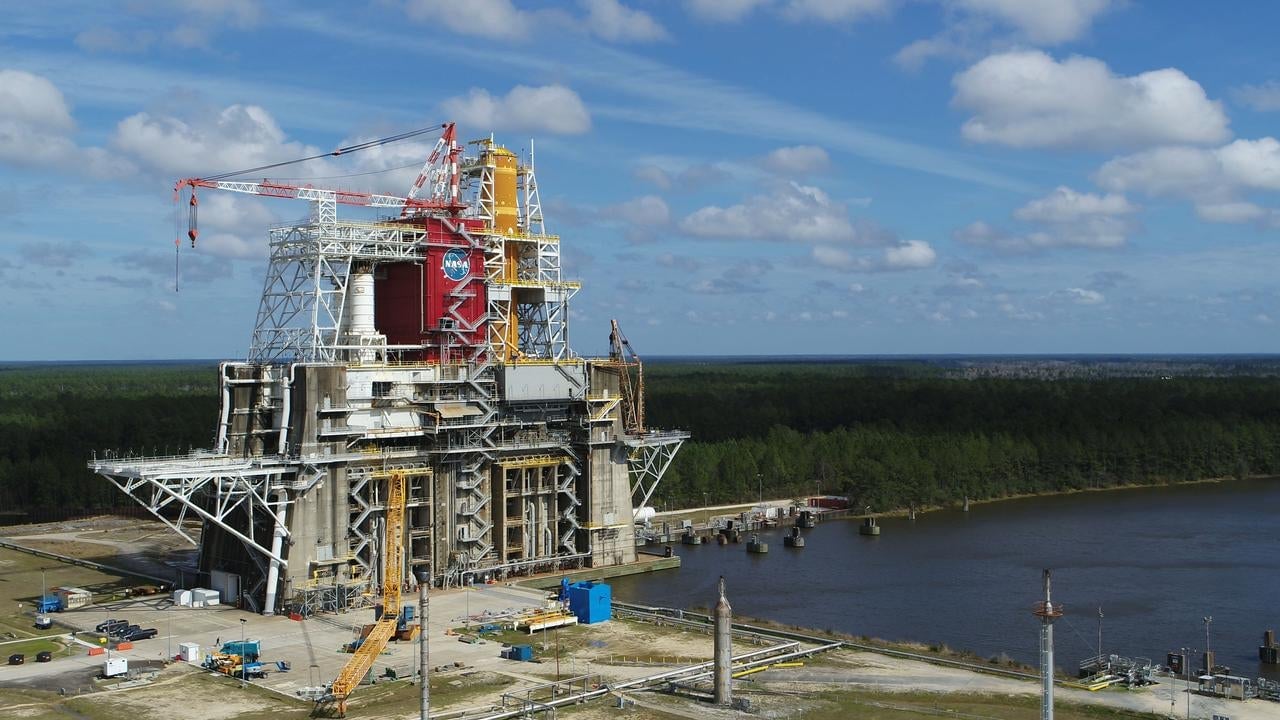Space Business: Size matters
Dear readers,


Dear readers,
Welcome to Quartz’s newsletter on the economic possibilities of the extraterrestrial sphere. Please forward widely, and let me know what you think. This week: Measuring the space economy, Green Run runners, and the billionaire-enhanced MethaneSat.
🚀 🚀 🚀
Word came down to the Bureau of Economic Analysis in 2019: We’d like you to measure the American space economy, please.
The task fell into the capable hands of Tina Highfill, a 17-year veteran of the statistical agency. Her role as a research economist includes developing new measures of economic activity that don’t fall into neat buckets already, like travel and tourism or health care. These are called “satellite accounts,” and now they need one for satellites.
The first challenge? Defining “the space economy.” For that, the BEA developed a three-part test that includes products used in space or supporting space activities, products requiring space inputs, or products associated with studying space. So, rockets, satellites, and antennas are in the first group, remote sensing in the second, and the college tuition paid for astronomy class is in the third.
After setting their parameters, Highfill and her colleagues then had to comb the BEA’s detailed measures of goods and services produced in the US to isolate space production. They also relied on tax filings, occupational data from the Bureau of Labor Statistics, and National Science Foundation records, among other sources.
“I was surprised by how pervasive space activity is within our economy,” Highfill told me. “Even if it’s small, every major sector of our economy has some space activity in it.”
In 2018, the most recent year estimated, the BEA found that the US space economy produced $178 billion worth of goods and services, employing some 356,000 people in the private sector. That’s not half bad! But it’s not enormous, either, considering that all US industries produced $36 trillion of gross output that same year. Still, Highfill is right that space is adding value across the economy, which makes this satellite account so interesting.
For example, nearly 8% of all US computer and electronics output is attributable to the space economy. That may reflect the nature of electronics products made in the US—only the most high-precision manufacturing is done in the US—but also the importance of space to the high-tech industrial base.
One big question that these statistics unfortunately don’t yet answer is whether the space economy is getting bigger, smaller, or simply more productive. The initial figures have not been adjusted for inflation, which means that as the value of these outputs changes, it’s difficult to tell if that means the level of production is changing, or if the cost of the product is falling.
Still, there are some interesting tea leaves. Consider one vital chunk of the space economy, manufacturing. This chart shows four of its most important components:

We can see the value of hardware produced in the US—satellites and GPS receivers, and rockets and space missiles—has actually fallen during the previous decade, which doesn’t jibe with tales about the $1 trillion space economy. At the same time, we see the margins earned by selling space goods have risen for both wholesalers and retailers. To take one example, GPS receivers—both standalone navigation tools and the chips that go into phones and lots of other devices—are making merchants more money.
“We think the price of these satellites are actually declining due to productivity gains,” Highfill says. That makes sense in world where space business success stories are often tales of engineers taking a multibillion-dollar government satellite and recreating its capabilities (or near enough) with a spacecraft costing millions of dollars, if not less. Moore’s law may just be late to space. But we won’t know with any certainty until these estimates are adjusted for inflation.
Less promising for space bulls: Growth in the space economy still lags behind the US writ large, although again we must be careful when looking at numbers that haven’t been adjusted for inflation. This chart compares all sectors, the space economy, and a “narrow” space economy whose definition excludes space education, satellite TV, and satellite radio. Notably, this more specific measure is growing faster than the broader one.

Alongside the work of the OECD, it’s fair to say that the BEA’s is the most sophisticated measure of the US space economy available. This year, Highfill and her colleagues plan to add 2019, adjust the series for inflation, and include government employees who are focused on space. But the future of this metric is not guaranteed, since it does not have permanent funding from Congress. Space advocates might add this to their wish list when talking to lawmakers and executive branch officials. After all, if you don’t measure, it doesn’t matter.
🌘 🌘 🌘
IMAGERY INTERLUDE
It’s finally happening—Boeing’s Space Launch System rocket will undergo a full-duration “hot fire” test called the Green Run as soon as Jan. 16. The SLS is intended to carry astronauts to the moon and a probe to one of Jupiter’s moons.
Stacked on a 200-foot (61-meter) test stand at Stennis Space Center in Mississippi, the vehicle will burn through 700,000 gallons of liquid oxygen and kerosene in 485 seconds. (Yes, you can watch.) The orange tube you see is the rocket, and the rest is infrastructure to make sure it doesn’t take off.

Still, NASA officials said there is no schedule margin left ahead of a planned first launch late in 2021, which likely means the long-delayed big mover won’t take to the skies until next year.
👀 Read this 👀
This week’s Quartz field guide is about my beautiful dog Miso:

Well, it’s actually about the emergence of the pet-industrial complex. The shift from working animals to pets as we know them came during the industrial revolution, when families grew smaller and had more time for recreation. Pets became objects of amusement and entertainment, and children were encouraged to look after them to develop responsibility.
Perhaps the biggest single development in human-pet relations came with the invention of a seemingly innocuous product in the 1880s: flea and tick shampoo. Prior to its sale, dogs and cats lived outside, in large part to protect their owners from the pests that lived in their fur. Once dogs came indoors—cats had to wait until 1947 and the invention of kitty litter—they became part of the household.
🛰🛰🛰
SPACE DEBRIS
Billionaires back meth satellite. The titular space billionaires are each playing a role in an important project from the Environmental Defense Fund. EDF has developed its own satellite to track methane emissions released by the petroleum industry, a significant and often unregulated cause of climate change. EDF has selected one of Elon Musk’s Falcon 9 rideshare missions to put the new satellite in orbit—and a big chunk of the project’s cost will be covered by a $100 million donation from Jeff Bezos.
Russia is mad about space internet. The new wave of low-flying internet satellite networks has some interesting implications for countries that seek total control of their citizens’ internet access. While the nuts and bolts of this technology—particularly its need for nearby ground stations—mean that sneaking internet past authoritarian borders is probably not a top use case, Russian lawmakers are nonetheless considering a law to fine anyone who uses these satellite services. SpaceX’s Starlink isn’t expected to do business in Russia, but OneWeb (at least before its bankruptcy and ownership change) called Russia an “important market.”
Astronaut upgrades. Blue Origin is planning another flight of its New Shepard suborbital rocket this morning, this one explicitly intended to pave the way for a future crewed flight—no research payloads this time, just “Mannequin Skywalker” and “features such as acoustics and temperature regulation inside the capsule, crew display panels, and speakers with a microphone and push-to-talk button at each seat.” If all goes well, this could lead to a long-awaited passenger mission, but I still don’t have a good answer for what has taken Blue’s engineers so long to reach this point.
Space Force realpolitik. The US Space Force made a surprise announcement that it would move its headquarters from Colorado to Alabama. KRDO News reports the decision was motivated by president Donald Trump’s desire for support from Alabama’s congressional delegation ahead of his second impeachment yesterday. The location of the headquarters—and the jobs and investment that come with it—was always going to be a political decision, but it is surprising to see the politics involve covering up the president’s insurrection.
Orbital wining. A Dragon spacecraft returned from the International Space Station this week bearing a number of research payloads, including a case of wine sent by a French space start-up I profiled in 2019. I hope to have tasting notes for you all shortly.
Your pal,
Tim
This was issue 80 of our newsletter. Hope your week is out of this world! Please send pictures of your dogs, behind the scenes tales of the New Shepard, tips, and informed opinions to [email protected].